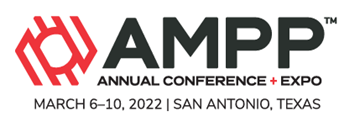Search
Online Conference Paper
View as
Sort by
Display
per page
"Mold And Mildew Investigation and Testing of Navy Interior Coatings"
Product Number:
51323-18804-SG
Publication Date:
2023
$20.00
“Case Study On Caisson & Piston Cylinder Protection Failure”
Product Number:
51323-19340-SG
Publication Date:
2023
$20.00
“Dollars & Cents - You Make The Choice: A Look At Elastomer Polyurethane Versus Epoxy Laminate Lining Systems For The Linings Of Water Or Wastewater Structures”
Product Number:
51322-18202-SG
Publication Date:
2022
$20.00
“Effect of Material's Surface Hardness on Solid Particle Erosion Resistance of Tungsten Carbides and Stainless Steel 316 in Sand-Air Flows”
Product Number:
51323-19212-SG
Publication Date:
2023
$20.00
15.5-Year Inspection Reveals the Effectiveness of a Single-Coat Epoxy
Product Number:
51322-17996-SG
Publication Date:
2022
$20.00
2-Layer Polyethylene Plant Applied Mainline Coating for Use in Water and Wastewater Pipeline Applications
Product Number:
51324-20761-SG
Publication Date:
2024
$40.00
3D Printing Of Cemented Carbide: A Review And Perspectives In Oil Sands
Product Number:
51322-17506-SG
Publication Date:
2022
$20.00
40-Year Maintenance Free Coating Solution for Offshore Structures
Product Number:
51324-20591-SG
Publication Date:
2024
$40.00
50 mV As a Screening Criteria for Shorted Casings – Case Study
Product Number:
51323-18899-SG
Publication Date:
2023
$20.00
51320-ALL-Summer 2020 Digital Proceedings Papers
Product Number:
51320-ALL-SG
Publication Date:
2020
$49.00
51321-All-CORROSION 2021 Virtual Conference Digital Proceedings
Product Number:
51321-ALL-SG
Publication Date:
2021
$149.00
51393-069-Prediction of CO2 Corrosion of Carbon Steel
Product Number:
51393-069-SG
Publication Date:
1993
$20.00












